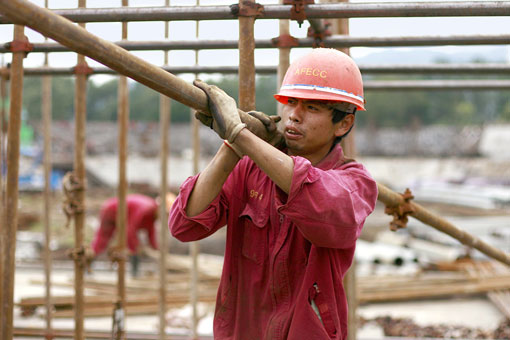China, unlike members of the Organization for Economic Cooperation and Development (OECD), considers foreign aid a “state secret,” so the total amount of aid to Latin America—estimated in the hundreds of billions of dollars annually—remains unconfirmed.
But it’s clear that such aid forms an important part of China’s increased economic clout in the region. Ngaire Woods, dean of the Blavatnik School of Government at Oxford University, claims Chinese largesse amounts to a “silent revolution, ” as Latin American countries find themselves with a new source of development loans, investment and assistance—as well as a new flexibility in choosing among lenders.
China’s economic strength is being felt worldwide. The Financial Times estimates that the Chinese provided more loans globally (over $110 billion) than the World Bank (around $103 billion) in 2009–10. Estimates were based on public statements of Chinese officials, banks and borrowers, which likely underestimate the actual amounts. Yet how much of this can be classified as “foreign aid” is unclear. Since China is not a member of the OECD, which collects uniform data from its members, actual aid numbers are hard to isolate.
In truth, it is possible the Chinese themselves are unsure how much aid they direct toward Latin America.
Technically, What is Development Assistance?
The differences between foreign aid as traditionally defined by the OECD and Chinese aid are so stark that clarification of the term itself is needed.
The majority of OECD aid is classified as Official Development Assistance (ODA). A loan is considered aid if (1) it is undertaken by a public sector entity; (2) its primary goal is economic development; and (3) it has a grant element, usually worth at least 25 percent of the loan.
However, in the Chinese context, “aid” tends to blur the traditional line between development loans and foreign investment. Chinese aid, with no standard definition, usually amounts to loans at below market rates, which do not contain grant elements. These loans do focus on economic development, but are also mutually beneficial, and they come with tangible benefits for the Chinese.
OECD members and their populations tend to view aid as a favor or charity provided to needy countries, which explains the constant calls to cut aid in times of economic uncertainty. The Chinese view aid as more of an investment, which benefits both the recipients and China in the long term.
Historically, while the results of OECD aid have been mixed, such assisance has formed a large part of the developed world’s relations with the developing world. OECD countries have been providing aid to Latin America, and other parts of the world, for several decades. It has long-established practices and principles that are largely noncontroversial.
Aid is designed to encompass broad issues of social development, such as education, health, gender equality, environment, and private sector development. The mission of the U.S. Agency for International Development (USAID) is to “advance U.S. foreign policy objectives by supporting: economic growth, agriculture and trade; global health; and democracy, conflict prevention and humanitarian assistance.”
The Canadian International Development Agency declares its purpose as simply to “help people living in poverty,” and its activity sectors are education, environment, health, gender equality, humanitarian aid, and private sector development.
Over the past several decades, there have been many different trends and priorities in ODA. The 1980s were all about stabilization and adjustment; the 1990s about institution building; and the 2000s about health and social spending.
Additionally, a significant portion of aid flows though multilateral institutions, such as the World Bank and the Inter-American Development Bank (IDB). These institutions dedicate considerable resources to ensure that aid is managed in a transparent manner as well as provide much-needed technical assistance. Technical assistance projects range from improving port efficiency to central bank regulation of credit markets.
Much of the criticism of OECD development assistance comes from the perception that aid is implicitly tied to economic reforms—the most sensitive of which has traditionally been privatization of state-run sectors, such as Bolivia’s water privatization, dramatically depicted in the award-winning documentary For Love of Water.
Another criticism, borne out by the numbers, is that OECD aid is becoming increasingly political and focused on military assistance. The share of U.S. aid provided by the State Department rose from less than 2 percent in 1980 to a peak of 27 percent in 2008. In 2010, USAID spent $208 million on “peace and security,” on projects like the Mérida Initiative to fight organized crime in Mexico, an odd allocation for an aid agency…





